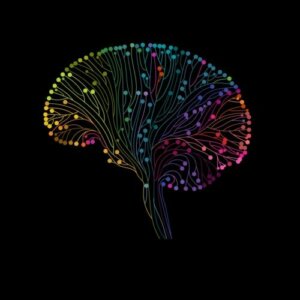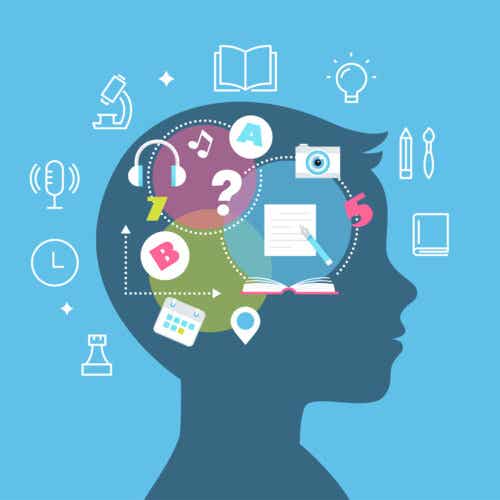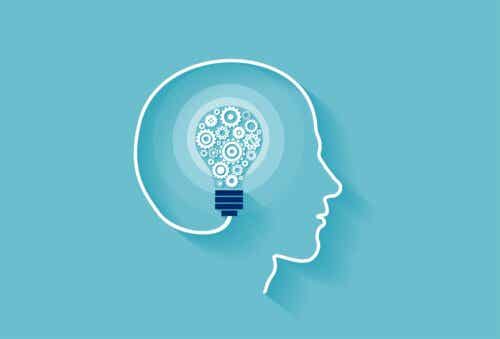Neuroplasticity and Learning: A Beautiful Relationship

Our brain’s ability to adapt and change in the face of any circumstance and experience is known as neuroplasticity or neural plasticity. Thus, a very close relationship exists between neuroplasticity and learning because the more we expose our brain to new and diverse learning situations, the more capable it will be to continue learning.
What is neuroplasticity?
At one time, psychology claimed that changes and modifications in the structure of the brain only took place during childhood. However, over time, this idea has changed and, today, we’ve discovered that the brain continues to change even when we’re adults.
Thus, neuroplasticity refers to the potential of the nervous system to modify itself to create new nerve connections, modify them, alter them, or even discard them if they’re not in use. These new neural connections respond to new information, stimuli, even damage or dysfunction.
Brain plasticity is inherent in our nervous tissue, which is a dynamic, adaptable, and plastic system that reacts to successive activations.
The beautiful relationship between neuroplasticity and learning
In order for our brain to become stronger and more adaptable, we must test it in new learning situations. That is, we must provoke our brain to constantly change – either through the study of themes or concepts or from experience, through which we learn and modify our behaviors.

We say that between neuroplasticity and learning there’s a beautiful relationship because it’s precisely through the latter that it’s possible to generate greater brain plasticity.
That is, learning is the ability to change behavior as a result of experience so that an individual can adapt to new environmental and social situations. Hence, a learning process causes changes in a person at the cognitive, behavioral, and anatomo-physiological levels of the nervous system.
Therefore, memory and learning are essential for the development of neuroplasticity, which is an intrinsic process of the brain. When we learn, we memorize and store information; this is a process that occurs in neural networks. With it, when we learn through study or experience, we stimulate our brain and allow two basic processes to take place:
- Sensory stimulation
- Cognitive stimulation
This enables us to put our brain to the test and to train it to be able to change and adapt when faced with learning.
Learn something new every day to preserve the relationship between neuroplasticity and learning
If we understand the relationship between neuroplasticity and learning, then what can we do to make sure that it lasts and doesn’t break? Well, this implies considering different actions, attitudes, and behaviors related to the development of our brain. Mainly, it means tapping into our ability to constantly learn something new.
There are many actions that we can consider to learn new things every day. We face many situations on a daily basis that provide learning opportunities – whether to expand our general knowledge of culture, learn a new language, memorize geography, or better understand nutrition and health.

It doesn’t matter if it’s formal studies, personal interests, or a hobby. The fact is that we have the predisposition and motivation to learn.
Everyday activities in which we learn
Some of the activities that we carry out daily and that we can learn from:
- Reading every day, even a few pages of a chosen book.
- Studying other languages little by little. Either attending a physical or online class, or simply through songs or movies and series with subtitles.
- Reading the labels of products that you buy in the supermarket. Review or look for information to understand the meaning of words or concepts that you don’t know or that attract your attention.
- Reading or watching the news, and researching more on topics of interest. Search for other information that expands, corroborates, or refutes the first; ensure that it comes from reliable and trustworthy sources.
- Settle any doubts you have regarding the meaning of a word, its synonym or antonym. More so today with mobile phones and internet, which allow us to immediately resolve any questions we may have.
- Getting more creative with a recipe. Add a rare spice that makes it phenomenal. Search for different recipes for the same dish. You can find out more about its origin and uses, and perhaps, include it in your next meal.
Our brain’s ability to adapt and change in the face of any circumstance and experience is known as neuroplasticity or neural plasticity. Thus, a very close relationship exists between neuroplasticity and learning because the more we expose our brain to new and diverse learning situations, the more capable it will be to continue learning.
What is neuroplasticity?
At one time, psychology claimed that changes and modifications in the structure of the brain only took place during childhood. However, over time, this idea has changed and, today, we’ve discovered that the brain continues to change even when we’re adults.
Thus, neuroplasticity refers to the potential of the nervous system to modify itself to create new nerve connections, modify them, alter them, or even discard them if they’re not in use. These new neural connections respond to new information, stimuli, even damage or dysfunction.
Brain plasticity is inherent in our nervous tissue, which is a dynamic, adaptable, and plastic system that reacts to successive activations.
The beautiful relationship between neuroplasticity and learning
In order for our brain to become stronger and more adaptable, we must test it in new learning situations. That is, we must provoke our brain to constantly change – either through the study of themes or concepts or from experience, through which we learn and modify our behaviors.

We say that between neuroplasticity and learning there’s a beautiful relationship because it’s precisely through the latter that it’s possible to generate greater brain plasticity.
That is, learning is the ability to change behavior as a result of experience so that an individual can adapt to new environmental and social situations. Hence, a learning process causes changes in a person at the cognitive, behavioral, and anatomo-physiological levels of the nervous system.
Therefore, memory and learning are essential for the development of neuroplasticity, which is an intrinsic process of the brain. When we learn, we memorize and store information; this is a process that occurs in neural networks. With it, when we learn through study or experience, we stimulate our brain and allow two basic processes to take place:
- Sensory stimulation
- Cognitive stimulation
This enables us to put our brain to the test and to train it to be able to change and adapt when faced with learning.
Learn something new every day to preserve the relationship between neuroplasticity and learning
If we understand the relationship between neuroplasticity and learning, then what can we do to make sure that it lasts and doesn’t break? Well, this implies considering different actions, attitudes, and behaviors related to the development of our brain. Mainly, it means tapping into our ability to constantly learn something new.
There are many actions that we can consider to learn new things every day. We face many situations on a daily basis that provide learning opportunities – whether to expand our general knowledge of culture, learn a new language, memorize geography, or better understand nutrition and health.

It doesn’t matter if it’s formal studies, personal interests, or a hobby. The fact is that we have the predisposition and motivation to learn.
Everyday activities in which we learn
Some of the activities that we carry out daily and that we can learn from:
- Reading every day, even a few pages of a chosen book.
- Studying other languages little by little. Either attending a physical or online class, or simply through songs or movies and series with subtitles.
- Reading the labels of products that you buy in the supermarket. Review or look for information to understand the meaning of words or concepts that you don’t know or that attract your attention.
- Reading or watching the news, and researching more on topics of interest. Search for other information that expands, corroborates, or refutes the first; ensure that it comes from reliable and trustworthy sources.
- Settle any doubts you have regarding the meaning of a word, its synonym or antonym. More so today with mobile phones and internet, which allow us to immediately resolve any questions we may have.
- Getting more creative with a recipe. Add a rare spice that makes it phenomenal. Search for different recipes for the same dish. You can find out more about its origin and uses, and perhaps, include it in your next meal.
All cited sources were thoroughly reviewed by our team to ensure their quality, reliability, currency, and validity. The bibliography of this article was considered reliable and of academic or scientific accuracy.
- Mendoza, L. A. A., Pardo, G. E., Puma, E. O. y Carrión, D. (2010). Aprendizaje, memoria y neuroplasticidad. Temática Psicológica, (6), pp. 7-14. Recuperado de http://revistas.unife.edu.pe/index.php/tematicapsicologica/article/view/856/767
- Garcés-Vieira, M. V. y Suárez-Escudero, J. C. (2014). Neuroplasticidad: aspectos bioquímicos y neurofisiológicos. Ces Medicina, 28(1), pp. 119-131. Recuperado de https://www.redalyc.org/pdf/2611/261132141010.pdf
- Herrera, B. M., Gamboa, R. H. y Moncada, J. (2018). Neuroplasticidad cerebral inducida por el ejercicio y rendimiento académico. Tándem: Didáctica de la educación física, (62), pp. 7-11.
This text is provided for informational purposes only and does not replace consultation with a professional. If in doubt, consult your specialist.








